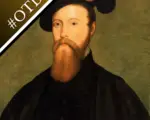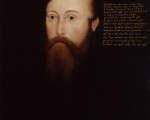Thomas Seymour, 1st Baron Seymour of Sudeley, was born in or before 1509 and was the fourth son of Sir John Seymour and his wife Margery Wentworth. He would have grown up at the Seymour family home of Wolf Hall (also known as Wulfhall) in Wiltshire. He was one of a brood of six sons and four daughters, and his siblings included Edward Seymour, Lord Protector; Jane Seymour, Henry VIII’s third wife and queen consort; Elizabeth Seymour, who married three times: Sir Anthony Ughtred, Gregory Cromwell and John Paulet; and Sir Henry Seymour.
Nothing is known of his early life, but Thomas started his court career by serving courtier and diplomat, Sir Francis Bryan, in whose service he was in by 1530. The Seymour family began to rise in favour at Henry VIII’s court as the king started courting Jane Seymour in spring 1536 and then married her on 30th May 1536, following the execution of Queen Anne Boleyn. Thomas joined Henry VIII’s privy chamber in October 1536 and while his sister was queen his rewards included being knighted and being named joint master steward of Chirk and Holt. In 1538, he benefited from the dissolution of the monasteries by receiving land once owned by monasteries in Essex, Hampshire and Berkshire. He was involved in diplomatic missions to France, Vienna and the Low Countries in 1538, 1542 and 1543 respectively.
[Read More...]




